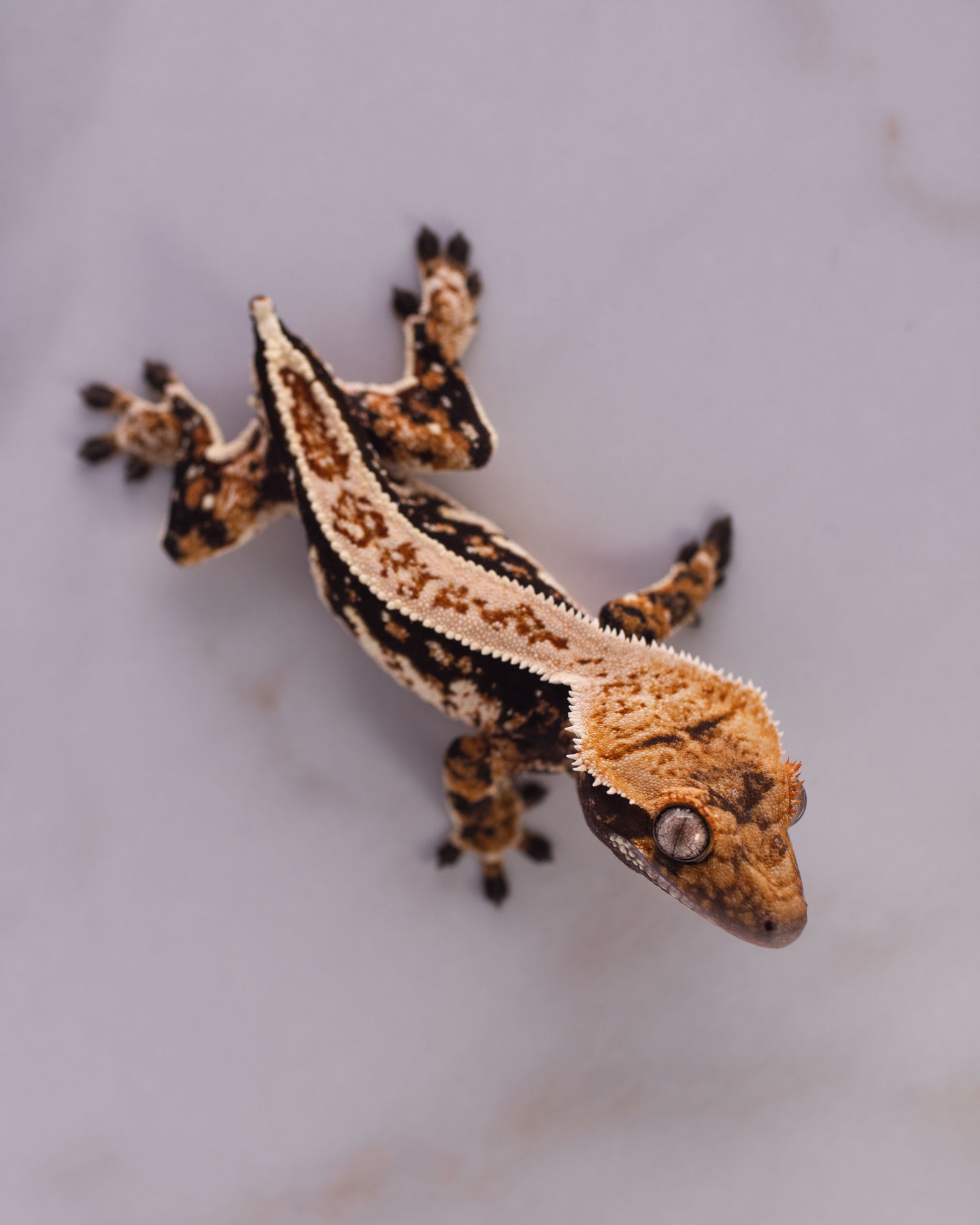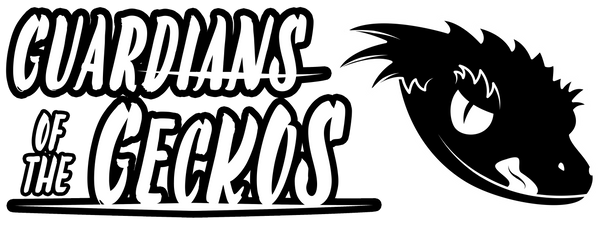
Crested Gecko (Correlophus Ciliatus) - General Care
Crested Geckos, also known as Correlophus ciliatus, are native to New Caledonia, an archipelago east of Australia. Crested Geckos are nocturnal and considered to be semi-arboreal, which means they will spend a good amount of their time in trees but also explore closer to the ground for food and shelter during the day. Crested Geckos are relatively easy to care for, making them popular reptile pets.
HOUSING:
- Enclosure Size: The size of the Crested Gecko enclosure should vary according to their size. For hatchlings up to 6 months old, a small container like a plastic shoebox is recommended, but not larger than a 10-gallon tank. This size facilitates finding food.
- For juvenile (over 6 months old) or adult Crested Geckos, a 20-gallon tank is recommended. For housing two adults, a 12x12x18 tank would be ideal. Height is more important than width or length since Crested Geckos are semi-arboreal and enjoy climbing.
- Housing Compatibility: Hatchlings should be housed individually to prevent tail-biting. Adult females can be housed together, but only one male should be part of a group unless breeding. Geckos housed together should be similar in size and weight. Avoid housing multiple adult males together as they may fight and cause injuries.
- Cage Setup: Using a paper towel on the enclosure's bottom is a safe and easy-to-maintain option. If you prefer a more natural setup, you can use coconut fiber substrate. Adding fake plants and climbing branches will provide enrichment for your Crested Gecko.
TEMPERATURE, LIGHTING, & HUMIDITY:
- Temperature: Maintain the enclosure temperature between 70-78 degrees Fahrenheit (21-26 degrees Celsius), which is essentially room temperature. Temperatures of 83 degrees Fahrenheit (28 degrees Celsius) or higher can stress the gecko and lead to health issues or death.
- Lighting: Crested Geckos do not require UVB lighting due to their nocturnal nature. Providing 12 to 14 hours of light using a fluorescent or LED light above the enclosure is sufficient.
- Humidity: Humidity is crucial for Crested Geckos' shedding. Mist the enclosure twice a day or at least heavily at night, depending on how well the enclosure retains humidity. The humidity level should be around 60%-85%. Allowing the tank to dry out between mistings is important to prevent mold and bacterial infections.
- Monitoring: Use a thermometer and hygrometer inside the tank to ensure accurate temperature and humidity levels.
FEEDING & WATER:
- Crested Gecko Diet (CGD): The most common method of feeding Crested Geckos is a commercially available Crested Gecko diet (CGD). CGD is a meal replacement powder that contains all the necessary nutrients, vitamins, and minerals for your gecko's health. Popular brands include Repashy and Pangea. Mix the CGD with water to the desired consistency and feed it to your gecko every other day, removing any leftovers the next morning.
- Insects: Insects can be offered as an occasional treat to supplement the gecko's diet. Gutload the insects with nutritious food at least one or two days before feeding them to your gecko. Dust the insects with a calcium supplement before feeding. Feeding crickets, roaches, mealworms, or waxworms to your gecko three times a week can promote growth.
- Water: You have two options for water. You can provide a small water dish and change the water daily. Alternatively, the geckos can drink water droplets from the leaves and enclosure walls when you mist the enclosure regularly.
Important Notes for Handling and Interaction with Crested Geckos:
Crested Geckos (Correlophus ciliatus) are generally docile and tolerate handling well, but it's important to approach them with care to ensure their safety and reduce stress. Here are some guidelines for handling and interacting with Crested Geckos, based on information from multiple reliable sources:
- Give them time to settle: Allow your Crested Gecko to acclimate to its new environment for a few days before attempting any handling. This will help reduce stress and allow the gecko to feel more comfortable in its enclosure.
- Approach gently and slowly: When picking up your Crested Gecko, approach it with slow and gentle movements. Sudden or aggressive motions can startle the gecko and may cause it to drop its tail or become stressed.
- Support the body: When handling your Crested Gecko, provide support for its entire body, including its tail. Avoid squeezing or grasping the gecko too tightly, as this can cause discomfort and potential harm.
- Avoid holding by the tail: It's crucial to never handle Crested Geckos by their tails. The tail can detach if grabbed or pulled, and while it will not grow back, it may negatively impact the gecko's health and well-being.
- Keep handling sessions short: Limit handling sessions to a few minutes at a time, especially if your gecko is young or not accustomed to being handled. Gradually increase the duration as the gecko becomes more comfortable.
- Choose a safe and controlled environment: When handling your Crested Gecko, it's recommended to do so over a soft surface or above a low, secure area to prevent any accidental falls or injuries.
- Observe the gecko's behavior: Pay attention to your gecko's body language. If it shows signs of stress, such as aggressive posturing, vocalization, or attempting to escape, it's best to return it to its enclosure and try handling at another time.
- Limit interaction with other pets: While Crested Geckos are generally tolerant of gentle handling, it's important to keep them away from other household pets, such as cats or dogs. Ensure a safe distance and supervised interaction to prevent accidents.
It's important to note that individual Crested Geckos may have different temperaments and handling preferences. Always observe and respect your gecko's comfort level and adjust your handling techniques accordingly. If you have any concerns or questions about handling or interacting with your Crested Gecko, consult with a reptile veterinarian or experienced reptile enthusiasts for additional guidance.
